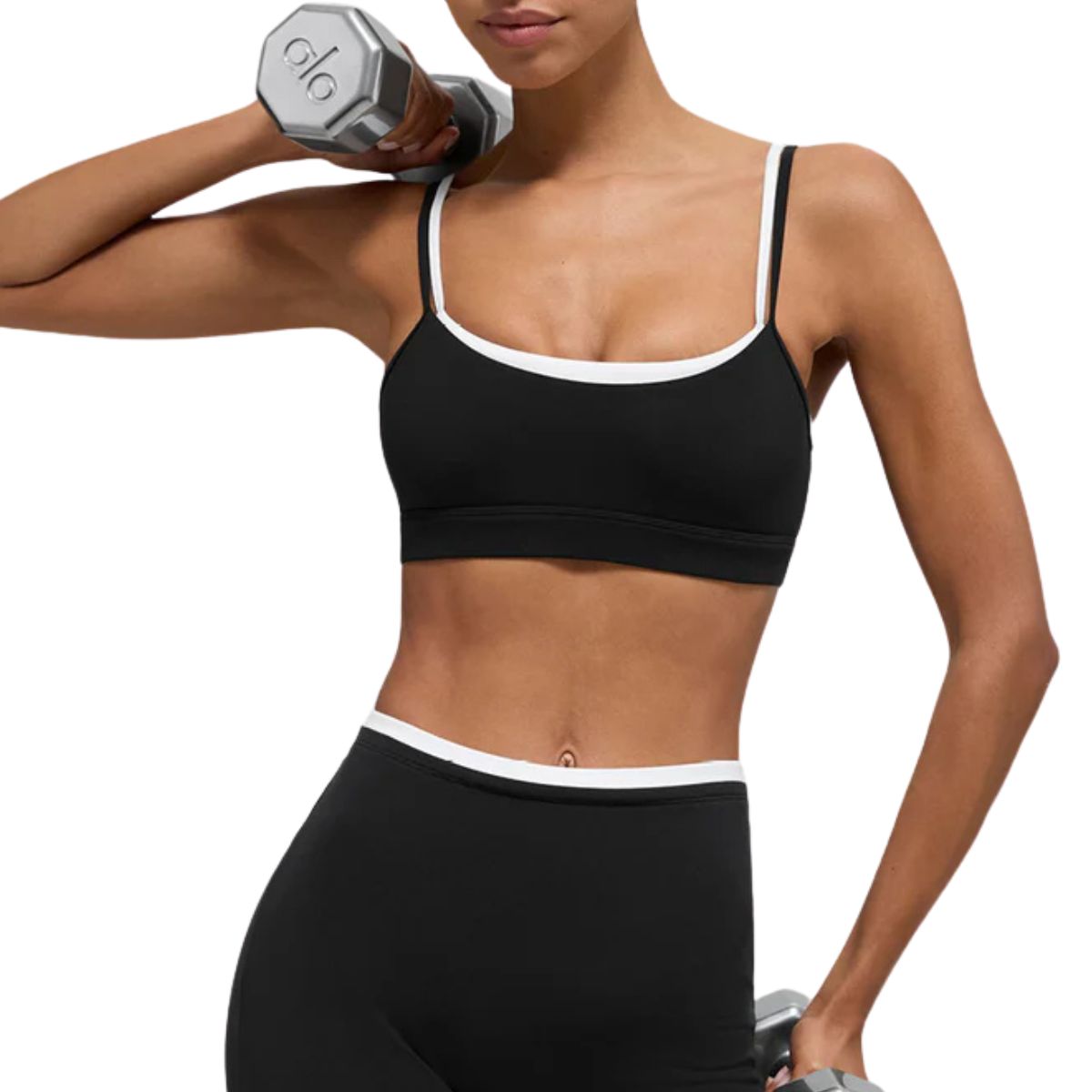The Hollow Hold Promises to Be Better Than Planking for Turbocharging Core Strength – so I Tried It for a Week
We put one of the most underrated core exercises to the test.
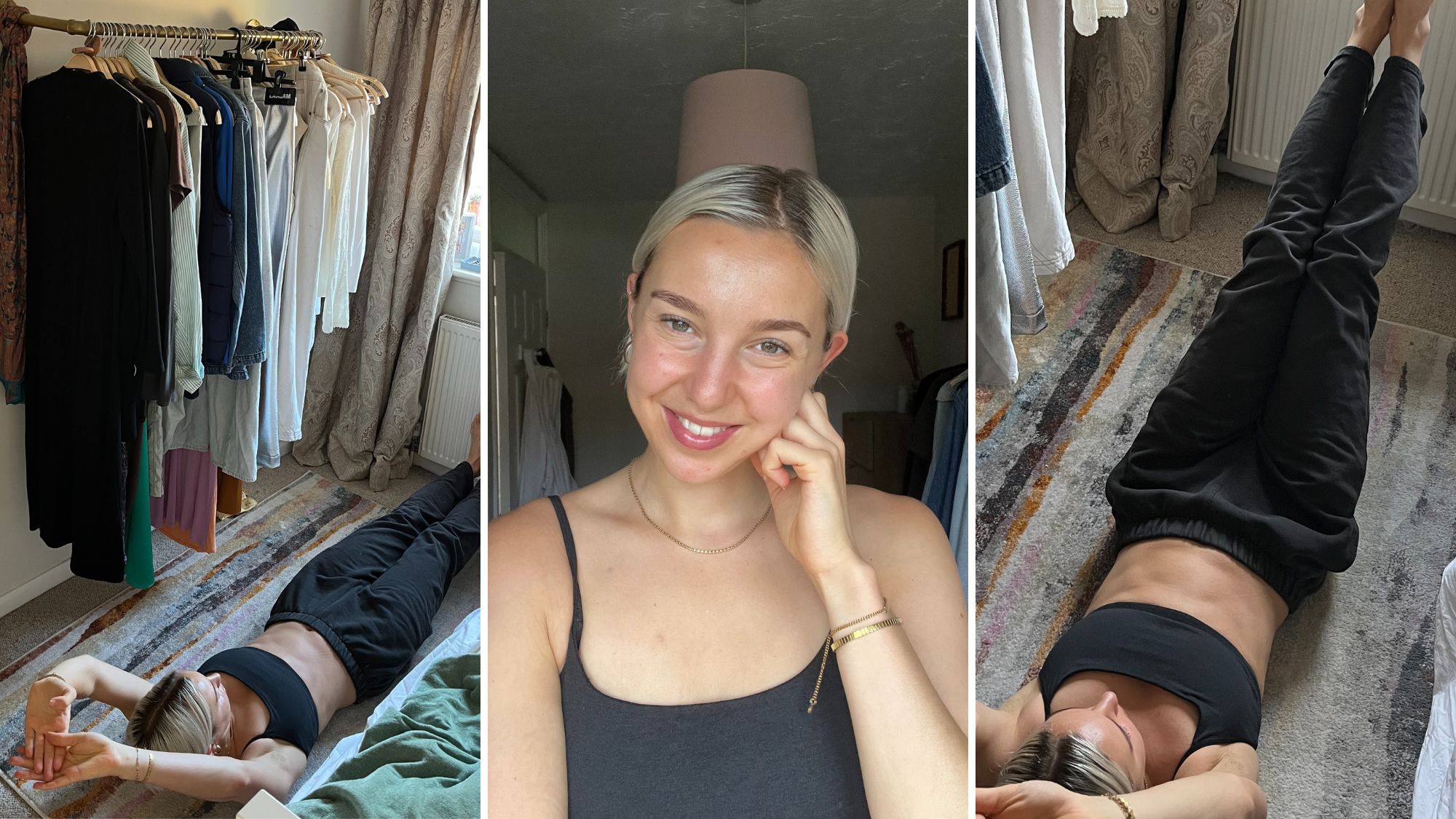

Ask a friend to name the first five core exercises they can think of, and the chances are that a plank will fall within their top three answers. It’s an undeniable ab burner, and one of the oldest core exercises in the book.
But as a Health Writer with over a decade of training under her belt, I can tell you that there’s one underrated move that burns more than any plank I’ve ever held.
Step forward, the hollow hold. Forming the foundation for moves such as the Pilates Hundred, Roll Up and Teaser, the hollow hold is like the plank in that you hold a single position for the entire duration of the movement. But unlike the plank, the hollow hold is performed on your back, with your arms and legs outstretched, placing increased challenge on your lower back, pelvic floor and hip flexor muscles.
With NHS reports finding 80% of us will experience low back pain at some point in our lives, the holistic challenge provided by the hollow hold will likely benefit many of us.
You see, we often fall into the trap of thinking that ab workouts are just about aesthetics, but a truly strong core, incorporating the muscles all around the sides and back of your trunk, actually plays a crucial role in maintaining good posture, preventing lower back pain and enhancing stability. In fact, one research study showed that those with lower back pain have a noticeable delay in the activation of their transverse abdominis (the exact deep core muscles targeted by the hollow hold), when compared with those with healthy backs, whilst another study found that poor posture was significantly related to a lack of muscular endurance in the lower lateral trunk muscles.
For me, the hollow hold comes particularly into its own during the summer months, when I make it my mission to spend as much time away from home, exploring new places, as possible. The result is a finely tuned hotel-room workout routine, in which the hollow hold regularly features. By virtue of the lack of reps, equipment or movement required, the hollow hold is a perfect exercise for even the smallest of spaces, whether that’s a hotel room, balcony or even beachside, targeting your entire core in one efficient swoop.
With a busy week on the horizon, I got the expert’s take on the merits of this complete core burner, before putting it to the test every day for a week. To find out how it left me feeling, keep scrolling. And if you’re in need of further core workout inspiration, check out our guides to the best deep core exercises, the best static core exercises, and the best transverse ab moves, here. Prefer to stand? Scroll through the best standing core exercises and standing ab workouts for beginners, here.
Celebrity news, beauty, fashion advice, and fascinating features, delivered straight to your inbox!
Search For Hollow Holds Is Booming - Your Expert-Led Guide
What is a hollow hold?
“A hollow hold is an isometric core exercise that involves lying on your back, lifting your shoulders and legs off the ground, and engaging your entire core to maintain a curved or “hollow” body shape, with your lower back pressed firmly into the floor,” says Lucie Cowan, Master Trainer at Third Space, who explains that the move is “growing in popularity in functional fitness routines due to its ability to build deep core strength and control.”
Josie Crafts, classical Pilates teacher and Head of Training at Bodyism agrees, adding that the exercise is particularly effective in “targeting the deep abdominal muscles, especially the transverse abdominis,” which support your entire midline and play an important role in core stability, breathing and posture.
What are the benefits of doing a hollow hold?
It’s easy to get sucked into thinking that a higher rep count equates to harder work for the abdominals, but as both experts remind us, it’s important to have a variation of dynamic and isometric (read: static) exercises in your core routine.
“Whilst dynamic pilates movements such as the traditional ‘abdominal series’ are great for strength and coordination, static holds such as the hollow hold are great for stability and deep control,” says Crafts. “The key is to execute each movement with precision and control, in order to maintain proper form and avoid injury.”
For Cowan, the benefits of isometric exercises such as the hollow hold are found in their ability to help us cultivate control and alignment, principles which are especially important for advanced lifts, gymnastics, and injury prevention. Below, she shares some of the specific benefits that come from practising the hollow hold.
1. Deep core engagement
“The movement targets the deepest layer of abdominal muscles, helping to support posture and spine stability,” says Cowan.
2. Improved body control
“The hollow hold teaches to brace your core and maintain tension,” she explains, “resulting in improved performance across other exercises like pull-ups, handstands, and running.”
3. Postural benefits
Cowan says that “by strengthening the muscles responsible for stabilising the spine and pelvis, we can reduce lower back pain and improve posture.”
4. Efficient ab training
“Since the hollow hold activates multiple core muscles simultaneously, it’s time-efficient and effective for building endurance and control,” Cowan adds.
According to Crafts, mastering the hollow hold is also essential for the proper execution of some of the more advanced moves in the Classical Pilates repertoire.
“Incorporating static hollow holds in your practice improves pelvic and spinal stability, as well as abdominal endurance, which helps to build a strong foundation for the Teaser and Roll Up, as well as supporting the use of the dish position in dynamic movements such as The Hundred and Double Leg Stretch.”
Who are hollow holds best for?
Crafts reminds us that anyone currently pregnant or postpartum, or who has an injury, should check with their physio, doctor or healthcare provider before trying out a hollow hold.
Aside from that, however, the experts agree that anyone looking to marry strength and stability could benefit from practicing a hollow hold, though Cowan says the move is particularly effective for those “training in callisthenics, gymnastics, or Pilates, or who already have a base level of core strength,” adding that “the move is also ideal for people who struggle with lower back pain, as it teaches proper core engagement and spinal alignment.”
Cowan cautions that for those (like me) with tight hip flexors, hollow holds may be difficult at first, as the position demands both core strength and hip mobility. For us, she suggests trying a bent-knee variation as a starting point.
How to practice a hollow hold with correct form
The ultimate goal of the hollow hold, says Crafts, is to hold a “true dish position, with your legs hovering a couple of inches off the mat, your toes in line with your eyes and your arms extended fully alongside your ears.” She cautions, however, that this move is tough and recommends modifying the movement at first, allowing yourself to build up gradually and avoid injury.
Below, Crafts shares her top tips to build up to a perfectly executed hollow hold.
- Start by lying on your back, with your tailbone anchored and arms by your side.
- Curl your head, neck and shoulders up off the mat by deepening your abdominals in and up, lightly imprinting your lower back into the mat. Hover your arms above hip height.
- To advance, lengthen one leg to a high diagonal and hold for ten seconds before switching.
- Once strength starts to build, you can challenge this further by extending both legs to a high diagonal and extending your arms back. The lower the legs, the greater the load on the abdominals, so only lower as far as you can keep your abdominals deepened and your lower back doesn’t start to arch.
An apparently simple but deceptively tricky move to master, Cowan has some important reminders to keep you injury-free during your practice.
- “Lower back contact is key,” says the trainer. “Your spine should remain in contact with the floor at all times. If your back is arching, reduce the length of your legs by bending your knees or lowering your arms.”
- “Engage the entire core,” she reminds us. “Think about pulling your belly button down toward the floor and squeezing your glutes and inner thighs together.”
- ”And remember to breathe,” she adds. “Don’t hold your breath - instead, focus on shallow, controlled breathing, which helps to maintain tension.”
- Cowan suggests starting with short holds over multiple sets to maintain good form. “Start with ten to 20 second holds for three to four rounds, and remember quality over quantity,” she concludes.
I tried hollow holds every day for a week, and saw a noticeable shift in form
Before I begin, I want to preface that I’m no stranger to the hollow hold. It’s been a staple in my workouts for years. That said, I’ll admit I’ve never truly taken the time to perfect my form. More often than not, my lower back starts to arch off the mat just seconds in. I’m also increasingly aware of my sometimes poor posture, with more than one recent candid photo catching me slouching far more than I’d like.
Call it a quarter-life crisis, but I’m more conscious than ever of the need to take care of my body now, so it can take care of me later. So, when the opportunity came to test out hollow holds every day for a week, I was looking forward to stripping things back to basics.
Days one-three
On day one, I tested my baseline by holding a hollow hold for as long as I could without my back arching or my legs dropping. After a few rounds of pelvic tilts and dead bugs to properly engage my core (for me, warming up before a tough ab exercise is non-negotiable), I lay flat on my mat, pressed my back firmly into the floor, and extended my arms overhead. Stopwatch ready, I tensed my core and lifted my head, neck, shoulders, arms and legs off the mat.
I managed a grand total of twelve seconds before my back began to arch. Humbled, I reset and reached thirteen seconds. My final attempt was eleven. I resigned myself to the fact that there was work to do.
On day two, I took things back a step. I knew I could hold dead bugs relatively comfortably, so I opted for a different progression. Inspired by Cowan’s suggestion of a wall-supported hold, I positioned myself with my feet gently pressing into the wall and lifted into the dish position. I was amazed at how just a light push into the wall made such a difference, and suddenly, I could hold for 45 seconds. I repeated it over four sets, consistently staying between 40 and 45 seconds. I had no pain in my lower back, and I could really feel my lower abs switch on.
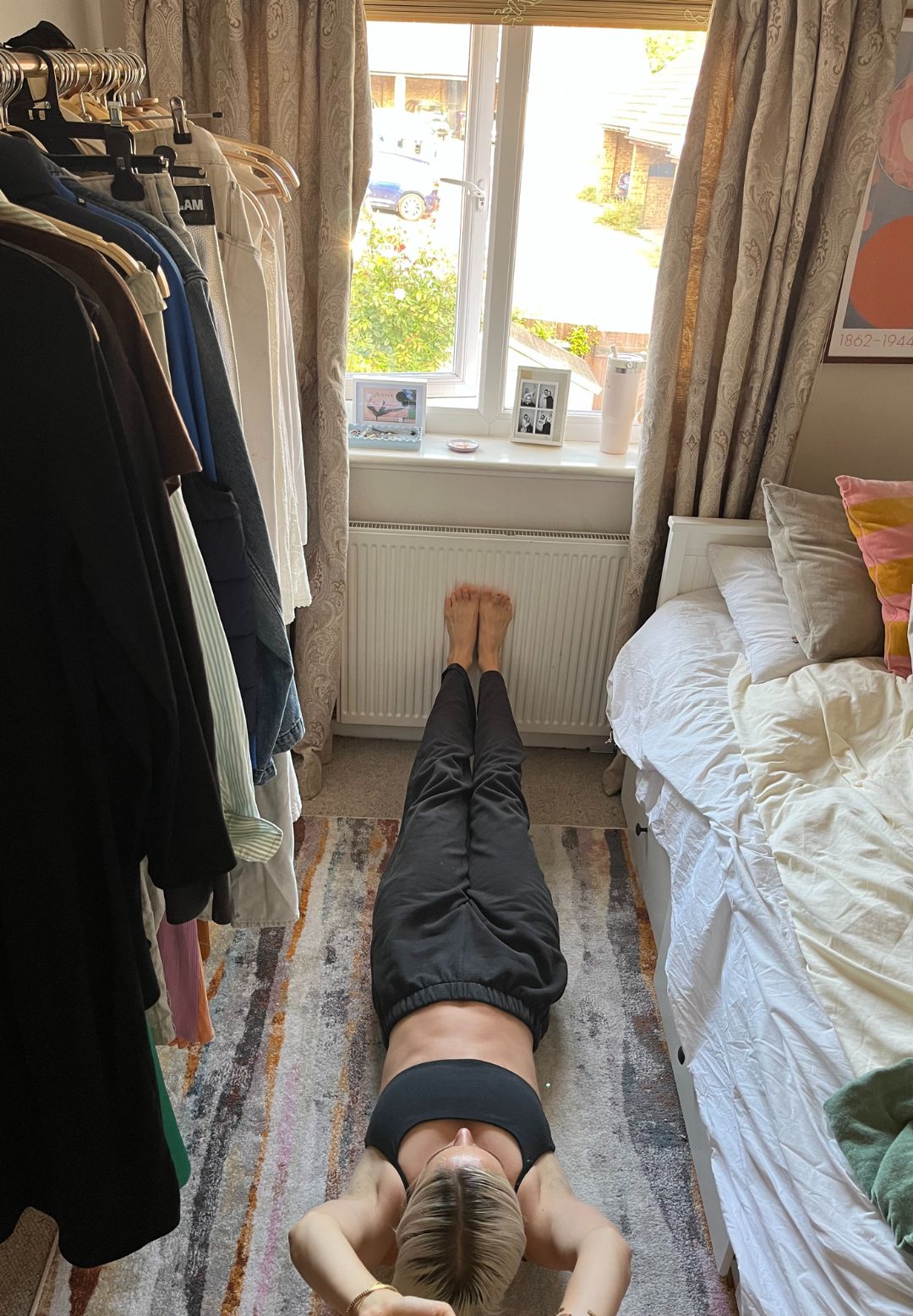
Ashleigh practices a wall-assisted hollow hold
By day three, I started with two sets of wall-supported holds to prime my core. Then, I nudged away from the wall and attempted an unassisted hold, only this time I held my legs on a higher diagonal than I had on day one. Having my legs higher eased the pressure on my lower abs and helped me keep my back flat against the mat. I held for 30 to 40 seconds across two sets, and already I felt stronger.
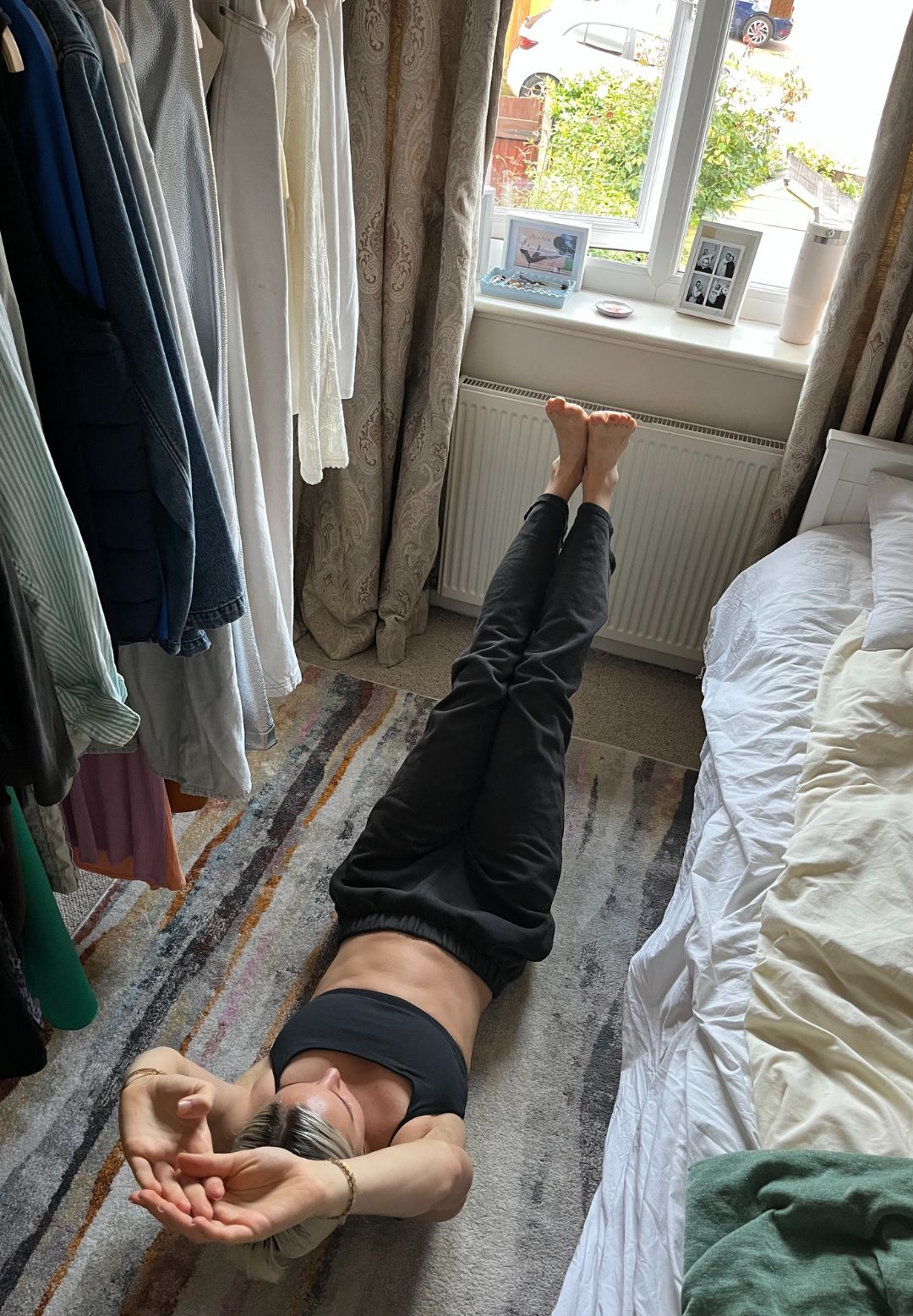
Ashleigh lifted her legs to a higher diagonal to ease pressure on her lower back, and maintain good form
Days four to seven
As I hit the second half of the week, the accumulation of other training began to show, and my body felt more fatigued overall. On day four in particular, when I did my hollow holds post-run, I felt noticeably weaker. Nevertheless, there was a marked improvement in my form compared to the start of the week. My pelvis held strong in its c-curve, and I completed three holds with my legs on a high diagonal for 40 seconds each.
On days five and six, I played around with leg positioning, inching them closer to the floor. I found a clear tipping point at around 45 degrees: any lower, and my hold time dropped sharply as it became harder to keep my core engaged without my back taking over. Still, I averaged 20 to 25 seconds per set at this lower angle, which was a noticeable improvement from the start of the week.
On day seven, I retested my one-rep-max hold. After warming up with my usual core priming exercises, I focused on steady breathing and full-body tension. What struck me most was how much mental energy a static move like this takes. With no movement to distract you, it requires so much discipline. My final hold was 27 seconds - a fourteen-second improvement from day one.
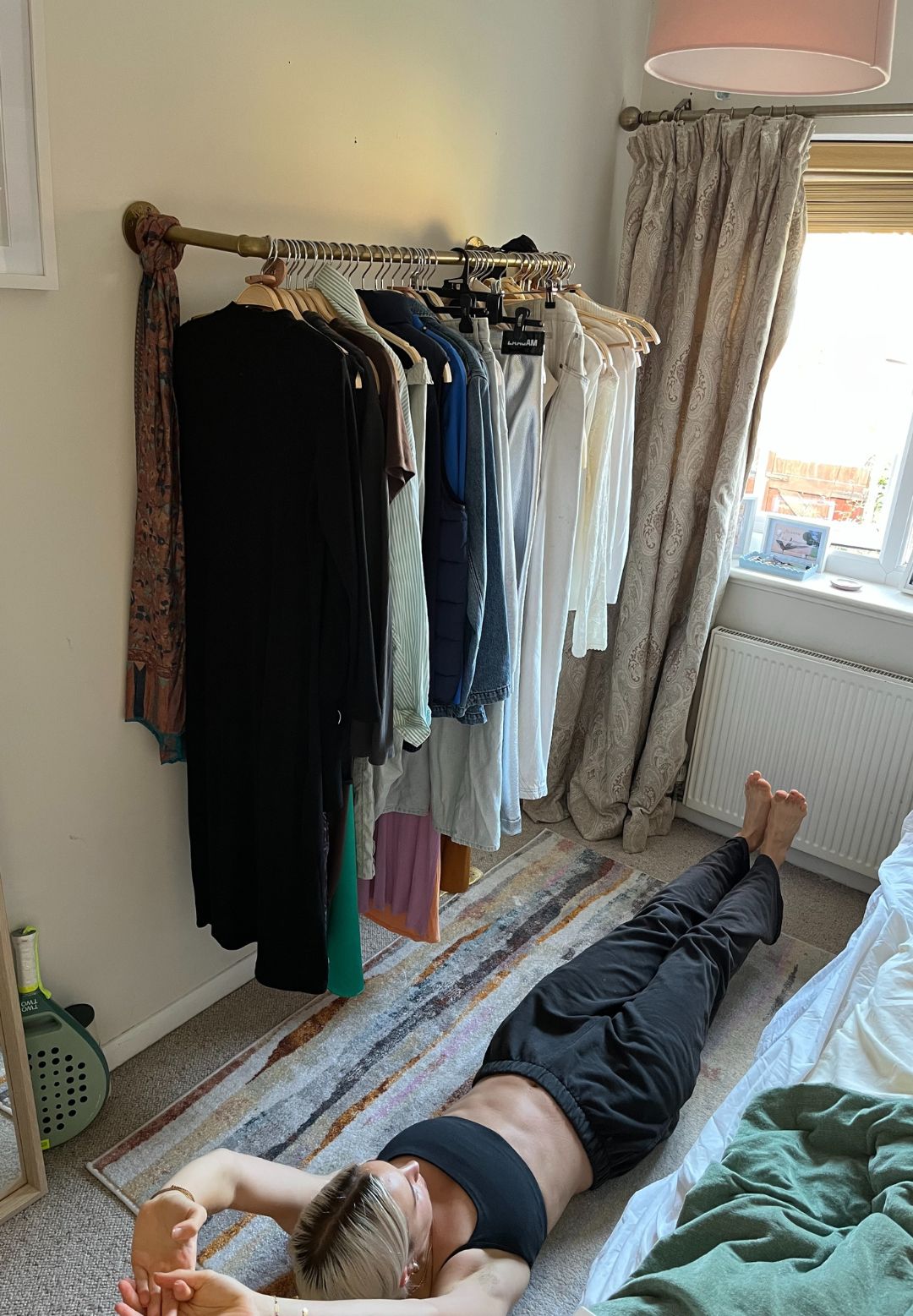
Ashleigh re-tested her one rep max hold at the end of the week's practice
There’s still plenty of room for progress, and building a genuinely strong core takes far more than a week of consistent, disciplined practice. That said, this week has shown me how much progress can be made with just fifteen minutes of intentional practice per day.
I noticed myself engaging my core more in my daily life; when walking, standing and chatting with friends, and even while sitting at my desk.
The hollow hold is one of those rare exercises you can do almost anywhere, and the functional benefits it offers are hard to ignore. If you’re after a smarter, fuss-free way to build core strength, I’d firmly recommend making it part of your morning or evening routine.
Shop MC-UK Approved Pilates Workout Kit Now:
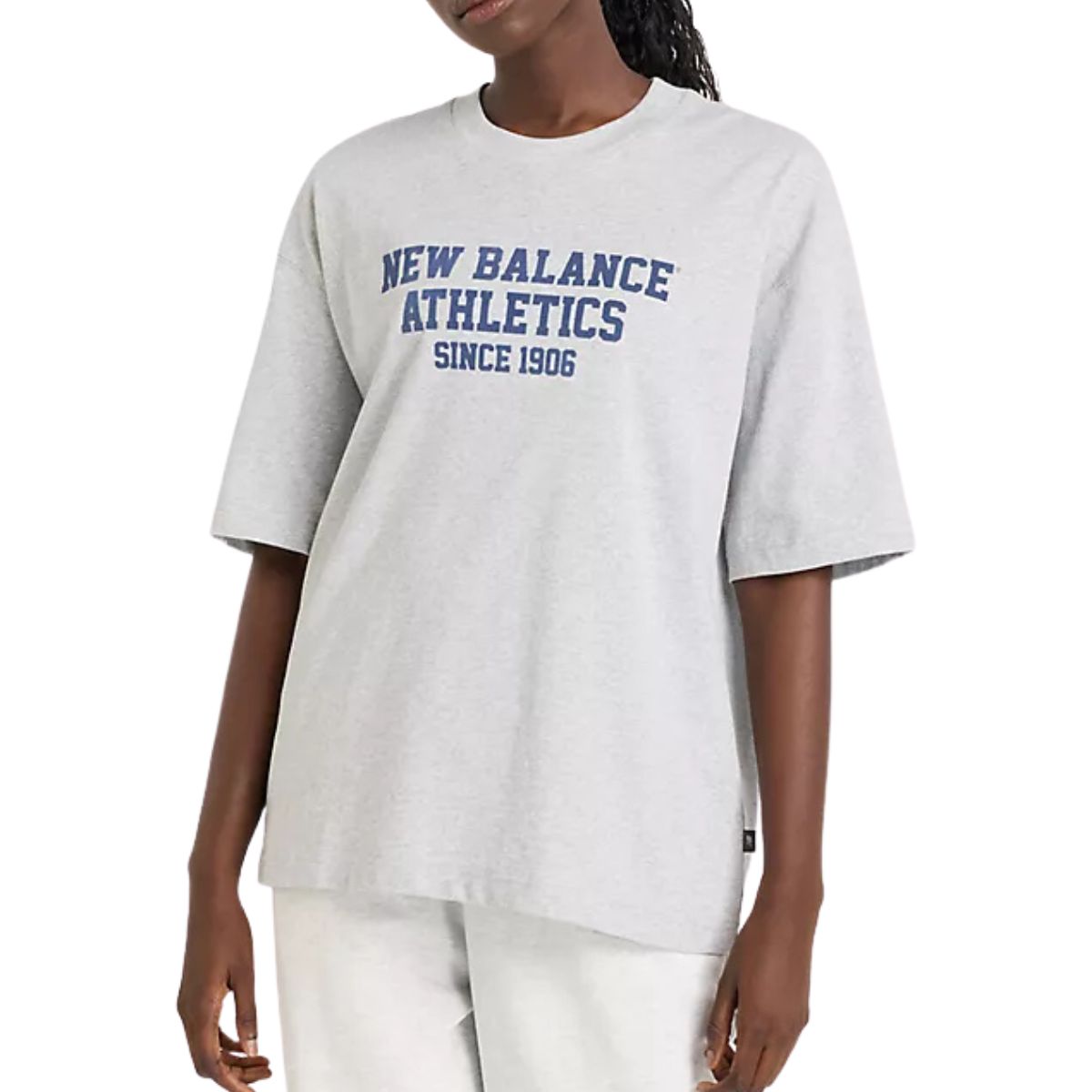
Sometimes you just need to be able to workout at home in your pants and an oversized tee, and that's ok. This one from New Balance will make you still feel put together, even on your tiredest of days. Made from 100% cotton, it's soft, comfy and a staple in our wardrobe.
What are the best alternative exercises to the hollow hold?
Hollow holds aren’t for everyone, especially if you’re new to Pilates, or if you’re recovering from injury or pregnancy. The good news is that this doesn’t prevent you from working your whole core safely, as Josie Crafts, Classical Pilates Teacher and Head of Training at Bodyism, explains.
”Deadbugs are a great way to build both core control and spinal stability. To perform the movement, lie on your back with your legs at 90 degrees and your arms straight above your shoulders. Slowly extend one leg and the opposite arm towards the floor, keeping your tailbone anchored.”
Crafts adds that “toe taps, another Pilates movement, also work the same group of deep abdominals as the hollow hold,” making it a great alternative if the movement isn’t for you. “Lie on your back with legs in tabletop,” she says. “Gently tap one foot to the floor, keeping the leg at 90 degrees and lower back still.”
For Lucie Cowan, master trainer at Third Space, using a wall for support is a great regression exercise for those who feel the full version of the hollow hold is too advanced. “Lie on the floor with your feet pressing into a wall to mimic the hollow body shape,” she says, explaining that this targets the same muscle group, with added support.

A former heptathlete, Ashleigh is a freelance journalist, specialising in women’s health, wellbeing and lifestyle, with words in Stylist, Cosmopolitan, Glamour and Marie Claire. She’s also the Co-Founder of Sunnie Runners, an inclusive London based run club.


